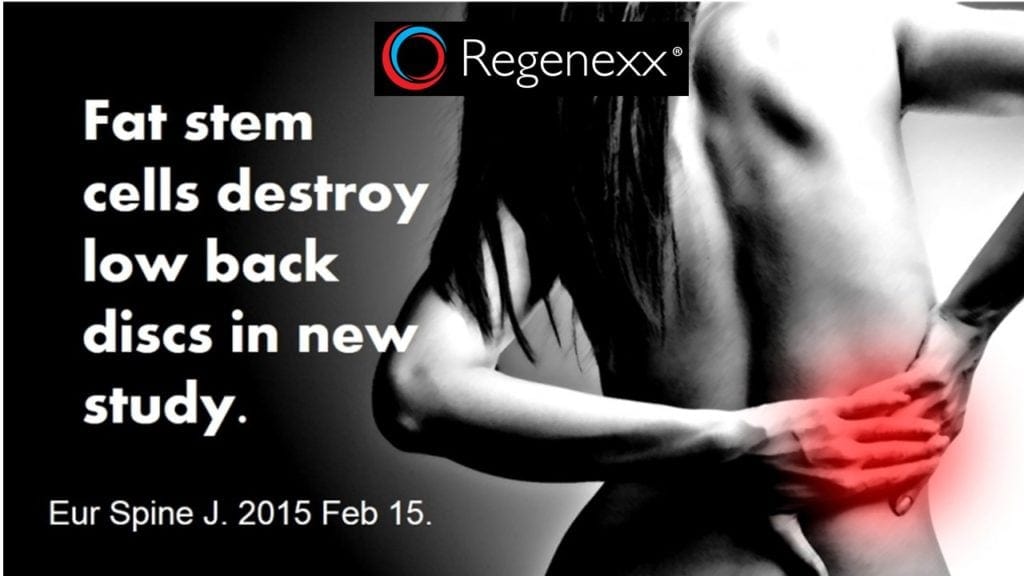New Research: Fat Stem Cells Bad for Back Discs
There are many clinics using fat stem cells for whatever ails you, including some clinics that are injecting these cells into degenerated discs. However, the vast majority of the promising research into stem cells to help low back discs has been performed with stem cells from bone marrow, not fat. What if the research that looked so promising with bone marrow cells was a complete flop with fat stem cells? Now a new research study shows that fat stem cells may injure rather than help low back discs.
Fat stem cells are obtained from a fat liposuction procedure. They have been touted as a cure-all by many physicians and while they may have some uses, regrettably the FDA has declared them an illegal drug. This hasn’t stopped many physicians from using them by ignoring the protestations of the FDA. But are these cells good for everything? As I’ve blogged before, we have little research showing that fat stem cells work for orthopedic problems. However, what if fat stem cells were actually really bad for the discs in your spine?
First, a while back a research study reported a big problem with injecting adipose stem cells into the spine of a real patient – spinal cord compression and damage. The more recent study was trying to move fat stem cells from the culture dish, where they looked promising, to an animal model. Despite several attempts at using fat stem cells to repair a degenerative disc, the stem cells seemed to disintegrate part of the disc itself. What does this mean? The fat stem cells eroded the top and bottom of the discs and caused severe out of control inflammation. The researchers couldn’t figure out why this was happening, but were very concerned.
The upshot? The research on bone marrow stem cells for treating bad low back discs is very promising. We’ve had a decade of experience using this stem cell type in the low back discs of real patients. However, while the culture disc experiments on fat stem cells have looked good, moving from that to animal models or patients looks risky. Yogi Berra once said, “In theory there is no difference between theory and practice, but in practice there is.”

If you have questions or comments about this blog post, please email us at [email protected]
NOTE: This blog post provides general information to help the reader better understand regenerative medicine, musculoskeletal health, and related subjects. All content provided in this blog, website, or any linked materials, including text, graphics, images, patient profiles, outcomes, and information, are not intended and should not be considered or used as a substitute for medical advice, diagnosis, or treatment. Please always consult with a professional and certified healthcare provider to discuss if a treatment is right for you.

